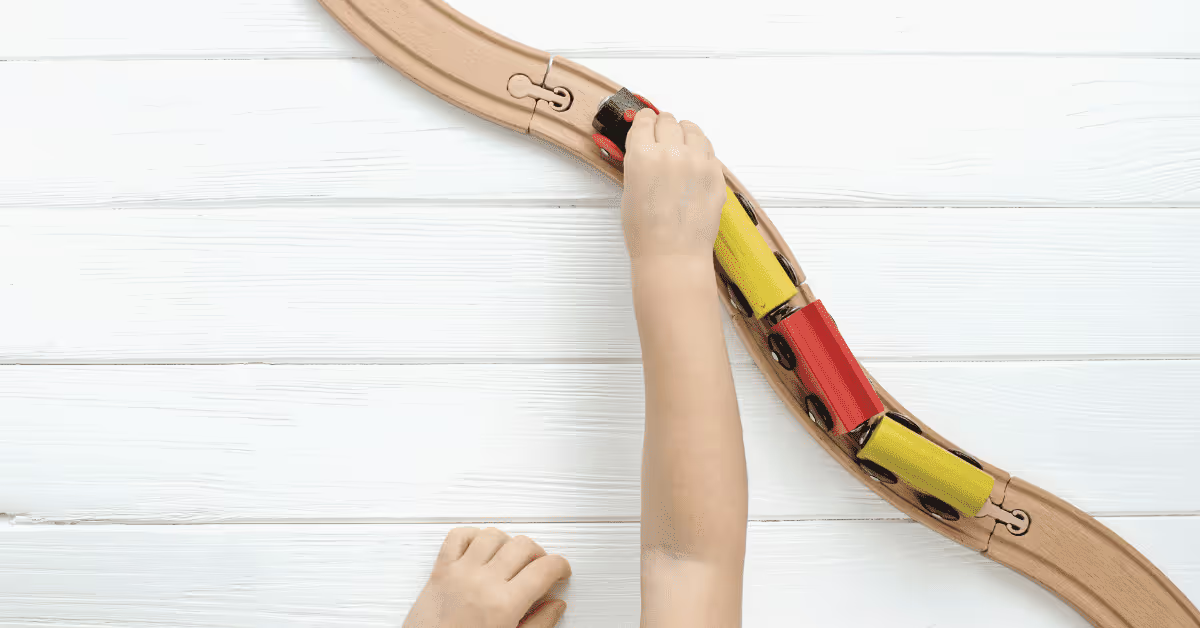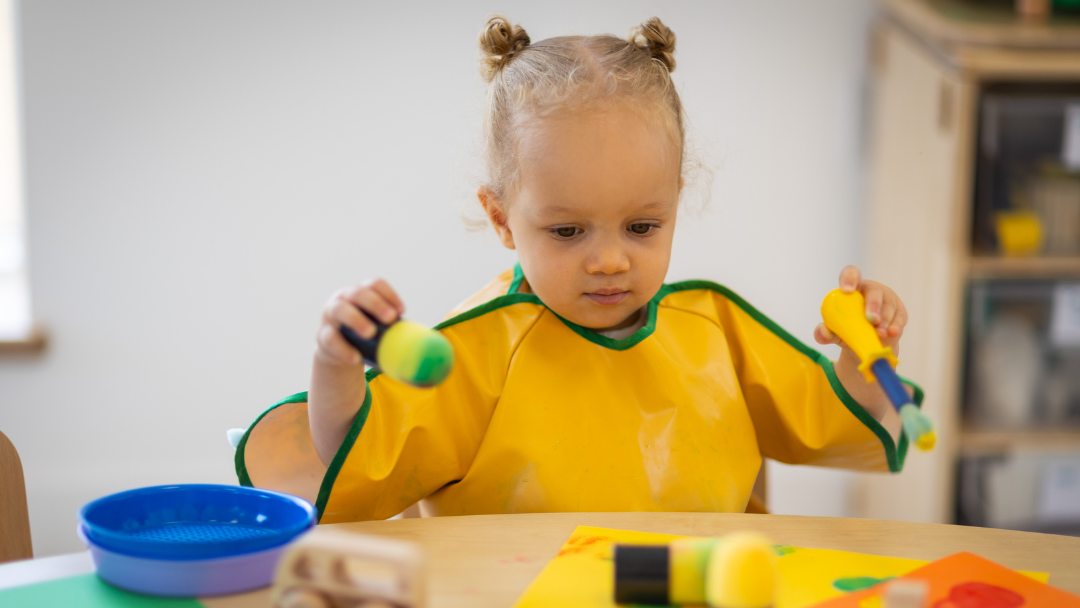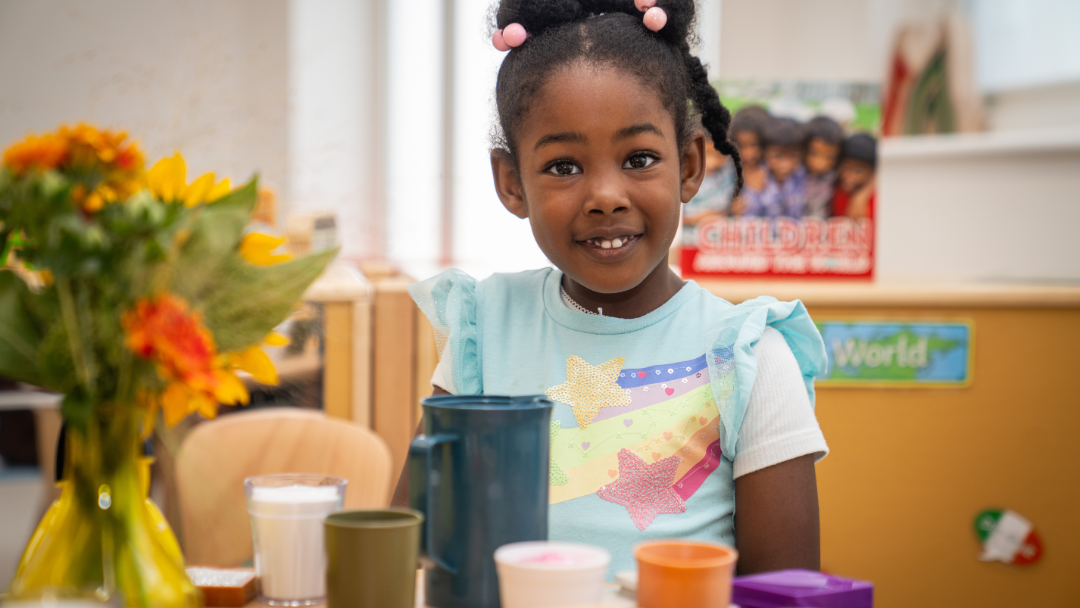Fennies Child Development Expert Sam Wass is proud to bring parents research-led and thought-provoking blog posts that help you discover ways to support your child as they grow. Sam is a father of two and a child psychologist best known for Channel 4’s ‘Secret Life of a Four- and Five-Year-Old' and provides us with cutting-edge research. This is utilised within internal staff training and shared with our parents to help them support their child's development.
At this time of year, I often get asked for recommendations for particular toys that I’d suggest buying for preschoolers.That’s always a tough ask - early development happens so quickly that something can be the perfect toy for a particular child at a particular time and then just a couple of months later it’s no good at all anymore! But there are a couple of principles that guide me in what I’d recommend - that I thought I’d share in this post.
Natural Toys

There is good evidence that actually being outside has a variety of beneficial effects for children, and there is even evidence that simply showing children pictures of nature when you’re indoors can improve childrens’ concentration and learning. (There are some problems with this evidence, such as that we don’t know exactly how early the effects start, which is something that I and a colleague are looking at at the moment.)There is good evidence that actually being outside has a variety of beneficial effects for children, and there is even evidence that simply showing children pictures of nature when you’re indoors can improve children's concentration and learning. (There are some problems with this evidence, such as that we don’t know exactly how early the effects start, which is something that I and a colleague are looking at at the moment.)But when it comes to toys there isn’t, to our knowledge, any evidence that actually playing natural toys affects children differently, compared with plastic toys. It’s certainly possible that there might be - for example, lots of people think that our eyes, ears and touch systems might find it easier to process natural textures, just because we’ve had more time over our development as a species to practice processing them - which might be why natural textures are more relaxing. But at the moment we don’t know for certain that natural toys do affect children differently.
How Toys Affect Development

One related question, though – and one where I would definitely say that there is more evidence – is about toys that bleep, or whirr, or flash when for example you press a button. Although these do definitely have benefits for younger children, in teaching them cause and effect, for older children I would argue more in favour of simpler toys, that make the child do work. Why is this? Well, the answer goes to the heart of how children pay attention, and learn...Basically (as I describe in a lot more detail here) we have two routes to paying attention – the first, which is early-developing, is our tendency to automatically pay attention to things that are moving, flashing or making noises. This tendency is already there is babies, and it’s often called ‘bottom-up’ attention because it’s located in the lower-down, early-developing regions of the brain. The second, which is later-developing, is our ability to choose what we pay attention to, and what we ignore – where it’s about what we want to think about, and not just whatever is my environment is ‘trying’ hardest to grab my attention. This tendency develops much more slowly, and it’s often called ‘top-down’ attention because it’s located in the higher up, later-developing regions of the brain.
Curiosity Lead Toys vs Interactive Toys
From my point of view, toys that beep or whirr or flash wouldn’t be so beneficial for an older child because a child’s brain wouldn’t have to work very hard to pay attention to them. They’re easy to pay attention to –through automatic attention mechanisms. (The same argument is often made to explain why watching TV might not be great for a child’s concentration – again because TV has a lot of movement in it, which means that it’s easy to pay attention to.)

Whereas toys that don’t work hard to try to ‘grab’ a child’s attention might be more beneficial in the long run – because, to interact with them the child has to practice controlling the focus of their attention voluntarily, even when the toy isn’t ‘trying’ to pull their attention in.Of course, though, this often comes down to short-term pain vs long-term gain! In the short term, your child will probably find it easier to pay attention to a beeping or whirring toy for a longish period of time - whereas a simpler, plainer toy might be harder for them to pay attention to keep focused on. (You might have to work, for example, at playing with the toy together with your child, which definitely also helps.) But in the long term, the more practice they get at staying focused on something even when it’s not ‘trying’ to attract their attention, the easier they might find it to stay focused on things in school.
FAQ
Subscribe to our newsletter
Stay up to date with Fennies news





.png)




.png)